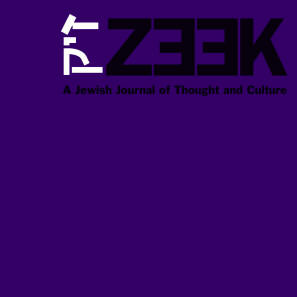 January 08
January 08
DIY Judaism: A Roundtable on the Independant Minyan Phenomenon
Shifra Bronznick
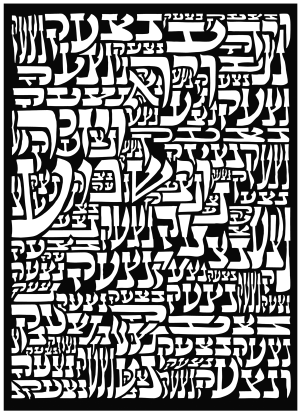 Jewish prayer requires a community of ten - a minyan - but not a rabbi or a congregation. For most of the past century, when the primary organization of American Jewish life was the synagogue, the distinction was academic. Over the last decade, however, there has been a small explosion of independent minyanim, lay-led communities for worship. Often meeting in church basements and synagogue social halls, these minyanim are disproportionately composed of young Jewish leaders and professionals - precisely the people the institutional community has tried and failed to reach with huge initiatives and costly programs. They are independent, communally governed, and non-denominational - and they may be quietly changing the shape of American Judaism. For this conversation, Zeek brought together the leaders of six such minyanim for a conversation moderated by Shifra Bronznick, herself a member of Minyan M’at, a lay-led minyan at Congregation Ansche Chesed in New York. The participants were Ben Dreyfus (Kol Zimrah, New York), Jo Ellen Green Kaiser (Senior Editor, Zeek), Elie Kaunfer (Kehilat Hadar, New York), Yehuda Kurtzer (Washington Square Minyan, Boston/Brookline), Sarah Lefton (Mission Minyan, San Francisco), Rachel Milner-Gillers (Tehillah, Boston/Cambridge), and Beth Tritter (DC Minyan, Washington D.C.)
Jewish prayer requires a community of ten - a minyan - but not a rabbi or a congregation. For most of the past century, when the primary organization of American Jewish life was the synagogue, the distinction was academic. Over the last decade, however, there has been a small explosion of independent minyanim, lay-led communities for worship. Often meeting in church basements and synagogue social halls, these minyanim are disproportionately composed of young Jewish leaders and professionals - precisely the people the institutional community has tried and failed to reach with huge initiatives and costly programs. They are independent, communally governed, and non-denominational - and they may be quietly changing the shape of American Judaism. For this conversation, Zeek brought together the leaders of six such minyanim for a conversation moderated by Shifra Bronznick, herself a member of Minyan M’at, a lay-led minyan at Congregation Ansche Chesed in New York. The participants were Ben Dreyfus (Kol Zimrah, New York), Jo Ellen Green Kaiser (Senior Editor, Zeek), Elie Kaunfer (Kehilat Hadar, New York), Yehuda Kurtzer (Washington Square Minyan, Boston/Brookline), Sarah Lefton (Mission Minyan, San Francisco), Rachel Milner-Gillers (Tehillah, Boston/Cambridge), and Beth Tritter (DC Minyan, Washington D.C.)
Shifra Bronznick (Moderator): What prompted you to start an independent minyan?
Elie Kaunfer (Kehilat Hadar): Hadar started in April of 2001. We wanted a service that would combine egalitarianism, a traditional liturgy, and spirited davening. The first time we had 60 folks. It grew to become people’s primary religious community. It now includes a weekly learning opportunity, which we’ve been doing at the JCC, and a number of social action efforts as well.
Rachel Milner-Gillers (Minyan Tehillah): When we founded Tehillah about four years ago, there were two major reasons for starting up. One was to create a space for women who felt otherwise sidelined in Orthodox synagogues. The other was that we wanted to create a religiously meaningful place where people would want to go to shul.
Beth Tritter (DC Minyan): There were four of us, two involved in an Orthodox shul and two in Conservative shuls. We wanted to pray in an egalitarian community that would also be welcoming to people who came from Orthodox backgrounds.
Sarah Lefton (Mission Minyan): We’re in San Francisco. We didn’t set out to found a big minyan at all. A few guys were simply trying to get a minyan together so they could pray in the Mission district, which is where youth culture, broadly defined, is located in San Francisco. So they just tried to set up a traditional minyan. Over time, the minyan has adapted to the hundreds of people who are showing up at our events. Really what this has been about has been creating a place in San Francisco where people from as many different Jewish backgrounds, levels of observance, and genders can pray more or less comfortably together in one place.
Yehuda Kurtzer (Washington Square Minyan): Our minyan started meeting two years ago. My wife and I had spent a wonderful year in DC going to the DC Minyan and we wanted to bring that experience to Boston. In the community in which we are living, there are a lot of folks who grew up going to shul and identify as shul-goers but who weren’t actually going to shul as adults and weren’t that involved. We created our minyan to answer that need.
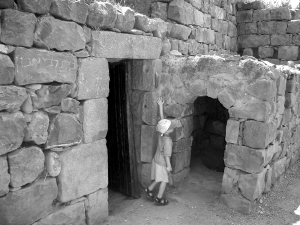 Ben Dreyfus (Kol Zimrah): Our style is different from that of some of the other minyanim. Our Friday night service is a full Kabbalat Shabbat with Ma’ariv in Hebrew, with lots of singing and musical instruments, such as acoustic guitar and percussion. There was already an active minyan scene in New York, so we saw it as one more thing to add to the ecosystem, but as time has gone on, many people now see Kol Zimrah as their primary community. When it started, we thought it would just appeal to a narrow niche, but instead we’ve gotten a very diverse community. We’ve had people who had never participated in a service that had instruments and people who had never participated in a service conducted in Hebrew.
Ben Dreyfus (Kol Zimrah): Our style is different from that of some of the other minyanim. Our Friday night service is a full Kabbalat Shabbat with Ma’ariv in Hebrew, with lots of singing and musical instruments, such as acoustic guitar and percussion. There was already an active minyan scene in New York, so we saw it as one more thing to add to the ecosystem, but as time has gone on, many people now see Kol Zimrah as their primary community. When it started, we thought it would just appeal to a narrow niche, but instead we’ve gotten a very diverse community. We’ve had people who had never participated in a service that had instruments and people who had never participated in a service conducted in Hebrew.
Shifra: Many of you mention the principle and practice of egalitarianism but you also are clearly invested in traditional prayer. Are you creating transdenominational services or are they traditional services that are egalitarian?
Beth: Labels are hard because they offend people. If you say “traditional,” what do you mean, whose tradition are you talking about? We really view ourselves as post-denominational. We don’t really feel that we need to be beholden to a movement to tell us how to conduct our services, what kind of scholarship we should be following or what sorts of discussions we should be having. We feel empowered to look at the options that are out there, to set our own boundaries, and to consult the people we want to consult to help us set those parameters. We also don’t feel like we have to have a spiritual head, a certain rabbi who we go to all the time. Sometimes when we describe ourselves we say conservadox, but that’s a horrible word.
Shifra: The other day I heard someone call themselves “flexidox.”
Beth: If you say conservadox, does that mean someone who grew up Reform wouldn’t feel welcome? If you say you’re flexidox does that mean that your starting orientation is Orthodox and you move out from there? Our starting orientation was to have a big tent within the parameters of halacha. We want to make as many people as possible be comfortable.
Sarah: We have people from every Jewish movement in our organization. We never use any of these terms. Our halacha committee represents several movements, and they don’t hand down decisions. We are even careful about using the word pluralism. We joke that the way that we know we are doing pluralism right is if everyone in the room is just a little bit uncomfortable. That said, we do have some baseline standards for kashrut and the way we maintain our space on yom tov - for example, we don’t use electricity and we don’t carry anything to shul. We understand that while it may make someone from an Orthodox background happy that no one carries food to kiddush, it may make someone else unhappy that they can’t bring food to share with people.
Shifra: Yehuda, how would your minyan define itself?
Yehuda: It is a complicated question. First, a lot of members of our community have strong relationships with local, denominationally organized congregations. Plenty of our members go to Orthodox synagogues, as well as another egalitarian minyan in town and some of the Conservative shuls. Many of these members don’t feel as stressed about denominational identity as the leadership does. When we first started, and said we were committed to egalitarianism and halacha, one person said, “You really have to define what you mean by halacha.” I wrote back to him, “When everyone else does that, we will too.”
Ben: Not only do we at Kol Zimrah not affiliate with a denomination, but it’s not clear to people what denomination we don’t identify with. The style of our service is not like what is going on anywhere else, so people coming from an Orthodox background say, “Oh, this is what a Reform service must be like,” and people from a Reform background say, “Oh, this is what an Orthodox service must be like.” We also don’t use terms like halacha, or language that represents a particular ideology. Instead, we formulate a set of policies, and it’s up to participants to decide if that fits with their principles. Instead of saying “everyone should be a little uncomfortable,” we would say, “we want to make it possible for everyone who is interested to participate in a way that is possible for them.”
Rachel: Our online description mentions our commitment to halacha and lets people know we have a mechitza. At the beginning, we were very careful not to label. But there are times when it may be useful to be more explicit about boundaries. Our minyan perpetually deals with this issue.
Shifra: Can you give an example?
Rachel: Probably the easiest is what we mean by halacha. We have two in-house halachic advisors, who are not ordained but who are immersed in Jewish legal scholarship, and they are very upfront that their halachic decision-making process is rooted in the Orthodox tradition. Many of our constituents, however, identify with other denominations. We love that Tehillah creates a place for cross-denominationalism. At the same time, the result is that our most important and controversial issues end up relating to how we engage the Orthodox tradition and institutions. One of our biggest challenges is accepting that despite our efforts to be inclusive, we do have definition and that may, at some point, breed exclusion.
Jo Ellen Green Kaiser (Zeek): What’s the difference between the post-denominationalism of your minyanim and the post-denominationalism of Jewish Renewal?
Sarah: Renewal communities are famously welcoming of people with different observance patterns, and I think that’s something we share with them. But I live in a hotbed of Renewal Judaism here in the Bay Area, and I haven’t found a Renewal service that is liturgically complete. Our minyan definitely has very spirited davening but is committed to the traditional service.
Ben: A major difference between independent minyanim and havurot and Renewal shuls is that many Renewal communities are centered around a charismatic leader, whereas all the communities that are represented here are focused on the grassroots.
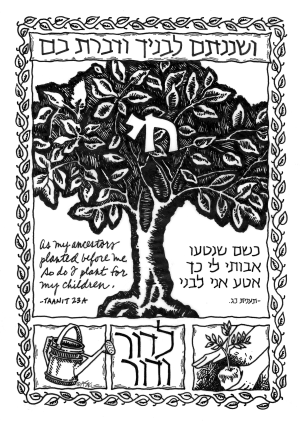 Shifra: Ben, are you conflating minyanim and havurot?
Shifra: Ben, are you conflating minyanim and havurot?
Ben: Yes. I am not sure that there is a clear distinction between communities identifying as “minyanim” and as “havurot.” Both tend to be dedicated to egalitarianism in the broad sense, in contrast to many Renewal communities that have a rebbe figure.
Yehuda: I think there are elements of minyanim and havurot that depart from each other. For our minyan, we have a fixation on quality control. We want to produce something that transcends the fact that we are all participants. We want to professionalize the lay leadership. It’s not a space where services can be led by whoever happens to be in the room. We are going to strive for an exceptional product, tefillah, every time we are there, and it’s not going to simply be “Well, we’re here, what can we do together.”
Beth: We are “come as you are,” but you can’t change the parameters just by walking in the door. We welcome you to be as comfortable as you can be within the parameters we set. We were also looking for quality control. We wanted to be very rigorous about our prayer.
Shifra: Elie, what impact does the desire for quality control have on participation?
Elie: It’s a balance we’re always striving to strike. The reason a lot of people come to these minyanim is they know that the leadership will provide a certain kind of service. That’s something people connect to. At the same time, people want access to roles of leadership. There are people who feel that quality is exclusive, because not everybody who wants to do something is going to be able to do it. What we’ve found is that there are a number of ways to be welcoming without compromising on quality.
Ben: I’m also on the board of the National Havurah Committee. I don’t think the main difference between minyanim/havurot founded recently and those founded in the 1970s is quality control. There are a lot of minyanim today that have varying emphasis on quality control. In the 1970s, when havurot were expanding, there were different ideas about what quality was, but they cared about quality control. What I see as a major difference is that the 1970s havurot had a sense of exclusivity - it was a very closed group of who was in, who was out. For many of the minyanim, there is no membership at all. Anyone who shows up is as equally a member as anyone else. That makes it very easy for someone living briefly in a place to feel like an insider, not an outsider. The flip side is that people who participated in communities with a defined membership had a sense of close-knit community.
Beth: DC Minyan has membership now. We’ve had two peaceful transfers of power since I’ve been at the DC Minyan, and we’ve ended up putting together an organizational structure for the minyan that many people didn’t like, because it made us look a lot like what we were running away from.
Shifra: Can you tell us what the structure is?
Beth: There is a steering committee of four people, and two of them turn over ever year, so there are two new people every year and two experienced people. There is also a leadership council made up of all the minyan’s committee chairs. One reason we did this is that we did start charging membership fees. In the beginning, it was self-funded - the four founders just wrote checks - but we decided we needed to find a way to become self-supporting. I affiliated with a Conservative shul before the minyan, and now I affiliate with the minyan. The way I do that is by paying membership dues. We have a two-tiered dues structure, and if you feel you can’t hit the lower threshold, you can talk to a member of the membership committee and then pay what you can, and you will still be on the membership list. We feel that is important.
Jo Ellen: It sounds like you are transforming from being a minyan to being a next generation shul.
Beth: We might be. Young people are used to parents figuring out their Judaism for them. In creating this minyan, I felt that it was very important to say to young people, it’s time for you to write a check. It’s not ok to just piggyback onto your parents’ membership for high holiday services.
Shifra: How have other minyanim dealt with the question of membership?
Ben: We’ve had suggested contributions from people who participate so people can pay according to their means, but we don’t have paid members.
Yehuda: We do have membership, but membership has no privileges. What we say in the membership drive is that membership is an opportunity to share in the costs of the minyan. I identify with what Beth has to say. For our minyanim to earn the title of independent minyanim, we also have to think of ourselves as financially independent. We depend on our community to support us. At the same time, we don’t have high holiday tickets - it’s open to the public. We have a directory, but anyone can be on it. Membership is there as a way for people to identify.
Rachel: We are in our third leadership structure. We have moved from a very loose get-together with no requirements to an open, democratic structure to a defined structure that leaves room for volunteers, but is much more strict. We’ve moved from a very strong sense of what our values were but not putting them down on paper to needing to think about what we put on paper, what is official. There have been quite a few controversial discussions about what the mission is - there are differences between the founders and people coming on now. Things that seemed so clear - like quality control - now don’t. The new leadership questions whether we should change that. There are questions about whether we need to stick with an Orthodox sense of halacha. There is a big struggle.
Shifra: Do you wish you had written down your original agreements?
Rachel: I wonder if that would have changed anything. The fact is, the leadership shifts and people leave. If we had written those principles down, the minyan might just have ceased to be “Minyan Tehillah” and become something else.
Sarah: Everything that Rachel said is 100% true for us as well. We had a difficult day yesterday in our retreat, when we talked about our evolving trichitzah [one women-only section, one men-only section, and a mixed seating section] policy. It’s very painful. Many times people threaten to leave if we do x, or we do y. I really wish that we had made decisions about seating years ago. Trying to make changes years down the road, when people are used to a set of facts on the ground, can be very difficult and sometimes painful.
Jo Ellen: I wonder what your end goal is. There are shuls that are participatory where rabbis take a consulting role. How far are your minyanim from being traditional shuls with a more participatory membership?
Yehuda: The question you ask, which sounds skeptical, is not so simple. You are talking about moving mountains. For synagogues to reimagine the role of the rabbi, to reimagine the role of congregants, for synagogues to engage young people, to focus on the constant ongoing struggle of quality and participation - these are enormous goals. I don’t know what this will look like in fifteen or twenty years. If some of these minyanim turn into shuls and are able to do the things they are doing now, that is awesome. If some minyanim stay the way they are, young and progressive and interesting, that is awesome too. I’m not invested in the goal. I’m skeptical of the question itself. If there is something radical going on in the way young Jews are engaging with community and prayer, let’s deal with it on that level, let’s acknowledge what’s taking place rather than being skeptical about what it’s turning into.
Rachel: I don’t think our minyan is afraid of becoming a shul. We may get to a point where we feel a rabbinic figure is necessary, where we feel a building is necessary. What we hope for, wherever we go, is that we can still be able to capture the energy that led to the creation and growth of Tehillah.
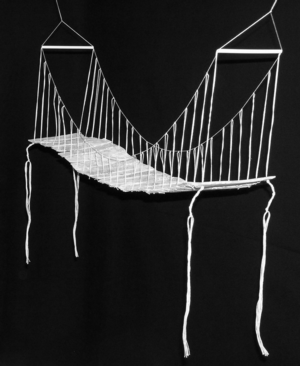 Yehuda: There is a lot to be observed in terms of the macro-phenomenon. There are conferences on conversations like this, a sea-change is taking place, but I don’t want to lose focus on the power of community on the microlevel, and what this has produced for me personally. It has been absolutely transformative for me personally. As Jews who didn’t need to be convinced to be Jewish, who didn’t need to be brought in the door, this has still been a life-transforming experience to be part of a community that is so committed.
Yehuda: There is a lot to be observed in terms of the macro-phenomenon. There are conferences on conversations like this, a sea-change is taking place, but I don’t want to lose focus on the power of community on the microlevel, and what this has produced for me personally. It has been absolutely transformative for me personally. As Jews who didn’t need to be convinced to be Jewish, who didn’t need to be brought in the door, this has still been a life-transforming experience to be part of a community that is so committed.
Sarah: We don’t aspire to be a model for any community anywhere else. What we are about is making San Francisco a viable place to be a Jewish adult. We are not being exclusive about age or anything like that, but before the Mission Minyan, I was a hair’s breadth from moving back to the East Coast because I couldn’t find a satisfying Jewish life for myself in my city, and that is true I think of everyone who walks into the Mission Minyan.
Elie: For us at Hadar, we weren’t anti-anything. We were just looking for a personally religious experience on Shabbat morning. To the extent that any structure gets that done, I’m for that structure. For us right now, Hadar is that structure.
Ben: I very deeply don’t care what will happen with these specific minyanim in ten years. It’s not about these specific communities. I don’t care what Kol Zimrah is in ten years. I care about what Judaism is, and what Jewish communities are, in ten years. I want to have a meaningful Jewish community wherever I am. If Kol Zimrah can grow and change and still be here, that’s great. If Jewish institutions can evolve to incorporate the values we’ve been talking about, that would be great, and if not, we will keep doing that outside all these institutions.
Shifra Broznick is an organizational consultant, innovator and feminist. She is a member of Minyan M'at, a lay-led minyan at Congregation Ansche Chesed.
